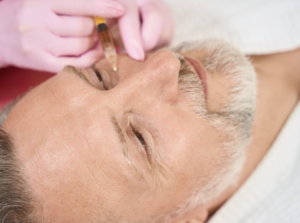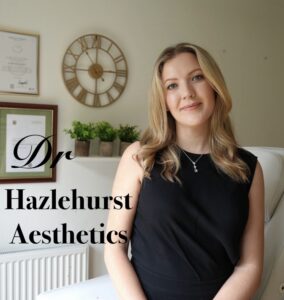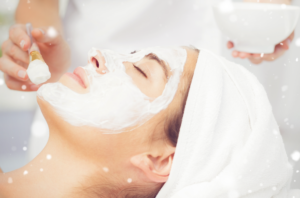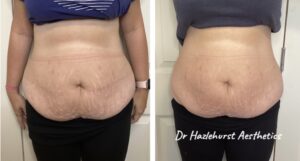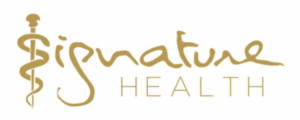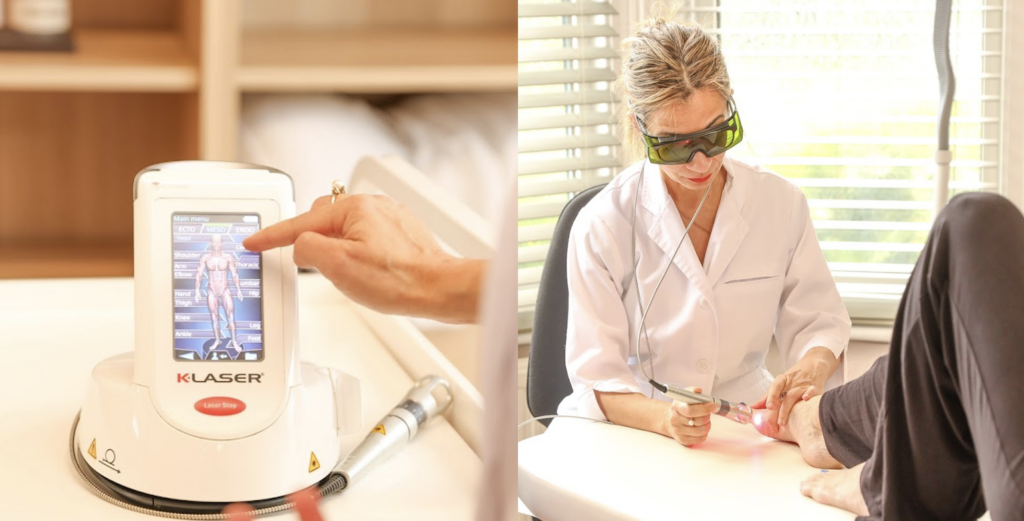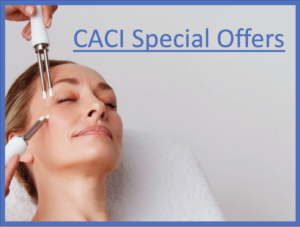Under Eye Rejuvenation Treatments: Polynucleotides vs Fillers
Are you confused about under-eye injectable treatments?
Dr Teri Johnson explains the difference between two popular eye treatments, the pros and cons, and which concerns they treat the best.
Advantages of Polynucleotide (PN) Treatments:
Polynucleotides are often the most popular treatment for treating the under the eye. This is due to their regenerative nature, which provides natural-looking results perfect for addressing the problems seen under-eye area.
Here are some reasons why PN treatments may be favoured above tear trough fillers under the eye:
Tissue regeneration:
PN treatments stimulate the body’s natural regenerative processes, promoting collagen production and skin rejuvenation. This can help improve skin texture, elasticity, and overall appearance under the eyes, addressing concerns such as fine lines, wrinkles, and skin laxity.
Natural results:
PN treatments can provide more subtle and natural results than tear trough fillers, which can sometimes lead to overfilling or an unnatural appearance. By enhancing the body’s natural collagen production, PN treatments can yield more subtle and gradual improvements that blend seamlessly with the surrounding skin.
Non-invasive approach:
PN treatments are typically administered through minimally invasive injections, making them a preferred option for individuals who prefer non-surgical or minimally invasive procedures. This can result in minimal downtime and reduced risk of complications compared to tear trough fillers, which involve the injection of dermal fillers into the delicate under-eye area.
Long-term benefits:
While tear-trough fillers may provide immediate results, their effects can be temporary, requiring repeated treatments to maintain the desired outcome. In contrast, PN treatments can yield more sustained and long-term benefits, promoting natural collagen production and skin regeneration.
Safety profile:
PN treatments generally have a favourable safety profile, with minimal risk of adverse reactions or complications when administered by a qualified healthcare professional. This makes them a safer option for individuals concerned about the potential risks associated with tear trough fillers.
Disadvantages of Polynucleotides
While polynucleotide (PN) treatments have shown promising results in skin rejuvenation, there are disadvantages that individuals should be aware of before undergoing this procedure.
Limited immediate results:
Unlike some other cosmetic procedures, the results of PN treatments are not immediately apparent. It takes time for the body to respond to the treatment and for the desired improvements in skin texture and appearance to become noticeable.
Temporary nature of results:
While PN treatments can stimulate collagen production and promote skin rejuvenation, the results are not permanent. To maintain the desired outcomes, individuals may require multiple treatment sessions over time, which can involve ongoing time and financial commitments.
Varied individual responses:
The effectiveness of PN treatments can vary from person to person, depending on factors such as skin type, age, and overall health. Some individuals may experience more significant improvements than others, and the degree of response may not be predictable.
Cost considerations:
PN treatments can be relatively costly, especially when considering the need for multiple treatment sessions to achieve and maintain the desired results.
Advantages of Tear Trough Fillers
Tear trough fillers are a popular choice for addressing hollowing under the eyes. This is due to their ability to provide immediate and visible skin lifting. Tear trough fillers are preferred under the eye for the following reasons:
Immediate results:
Tear trough fillers provide immediate volume correction by filling the hollow under the eyes. This quick and noticeable improvement is highly desirable for individuals seeking immediate results.
Targeted Lifting of Hollowing:
Tear trough fillers lift depressions under the eyes, reducing the appearance of under-eye hollows.
Customisable treatments:
Tear trough fillers allow for precise and customisable treatments tailored to the unique anatomical needs of each patient. A suitable individual filler can achieve a natural lift to improve the hollow under the eye area.
Disadvantages of Tear Trough Fillers
While tear trough fillers can effectively treat under-eye hollows, there are disadvantages to their use. It is, therefore essential for individuals considering this treatment to be aware of these factors.
Risk of complications:
While tear trough fillers are generally safe, there is a risk of potential complications. These include the common ones such as bruising, swelling, redness, or infection at the injection site. However, in rare cases, more severe complications like vascular occlusion can occur. An occlusion can cause skin ulceration and facial tissue damage, rarely lead to blindness.
Need for a high level of expertise:
For a successful tear trough filler treatment, you need a practitioner with experience. They need an excellent understanding of facial anatomy and understand how and where to treat delicate under-eye area. In inexperienced hands, there is an increased risk of improper placement, asymmetry, or overfilling, leading to an unnatural appearance.
Risk of nodules or lumps:
Individuals may sometimes develop small nodules or lumps at the injection site following tear trough filler treatment. You can sometimes massage these away, but your qualified practitioner can also dissolve them.
Filler Migration:
Tear trough fillers can migrate, causing unwanted swelling and puffiness in the nearby area. This can occur days to years later, and the swelling can last several years unless it is dissolved with hyaluronidase. Even when the treatment is performed in the most experienced hands, filler can easily migrate from the injected area. No barrier holds the filler in the tear trough area, so it can move outside of the hollow area over time.
Longevity of the Filler.
While tear trough fillers offer immediate results, it is essential to note that their effects are temporary, typically lasting anything from six months to a year. However, some filler can remain in the treated area for several years. In fact, some MRI studies have shown filler can remain even five years after treatment.
In contrast, PN treatments may offer longer-term benefits by stimulating collagen production and promoting skin rejuvenation. Polynucleotides do not stay in the skin for long and do not cause side effects later down the line. Should they migrate, they simply stimulate rejuvenation/revitalisation in the area.
How do you decide which treatment is for you?
The choice between tear trough fillers and PN treatments depends on individual preferences and their specific concerns. A comprehensive consultation with a specialist who understands the treatments can help determine the most suitable treatment. They will need to examine you, assess your anatomy and concerns and discuss with you how best to achieve your aesthetic goals.
At Cheshire Lasers, the following Doctors and Nurses perform Polynucleotide treatments and tear-trough fillers. If you are considering a treatment, we recommend you book a consultation with one of them to assess your concerns.
Do you prefer a non-injectable under-eye treatment?
Find out more about these treatments here.

